Results 1,341 to 1,350 of 12094
Thread: Anandtech News
-
01-04-12, 01:50 PM #1341
Anandtech: Thunderbolt Goes Universal in H1'12
Thunderbolt initially launched in February when Apple updated the MacBook Pro, but since then the technology has been an Apple exclusive. The understanding was that Thunderbolt would be a universal high speed interface, but uptake outside the Apple ecosystem has been slow. There have been rumors that Thunderbolt would come to PCs in early 2012, but we haven’t seen any concrete evidence of this until today.
Expreview has leaked a slide from Intel’s motherboard roadmap that shows Thunderbolt support in the highest-end motherboard, the DZ77RE. Aside from Thunderbolt, the motherboard features two x16 PCIe slots (x8 if both are in use) with support for CrossFire and SLI, dual LAN interfaces, and it has overclocking capabilities. USB 3.0 and SATA 6Gb/s support are absent on the slide, but that may simply be a lack of space in the roadmap box. The motherboard is based on the upcoming Z77 chipset that supports four USB 3.0 and two SATA 6Gb/s ports, so we expect to see these in DZ77RE as well.
Pricing is unavailable but according to the roadmap, the DZ77RE is positioned at the same level as the currently shipping DZ68BC and DX79SI, which are priced $220 and $280 respectively. Thus, we would estimate the retail price of DZ77RE to be around $250. Over $200 is definitely a premium price for a motherboard and it’s clear that DZ77RE is aimed at enthusiasts. Thunderbold is also a high-end feature right now, so it might take a while to migrate into mainstream products.
The message that the price sends is definitely not pleasant. It looks like Thunderbolt will go the same way as FireWire: it’s faster than the more popular USB but the cost is too high for mass adaption, hence it will mainly be used by a small group of professionals and prosumers. Consumers simply won’t pay the hefty premium for one port, especially when similar connectivity can be achieved with USB 3.0 and DisplayPort in most cases. This is bad news in terms of Thunderbolt accessories as well. If the market is small, we will see less competition, which in turn leads to higher prices and fewer innovations (e.g. look at the pricing on some of the other Thunderbolt solutions). Thunderbolt has the potential to be used for almost anything, but it will need to hit competitive prices with alternative solutions if it's going to see widespread adoption. Of course, other motherboard manufacturers may include Thunderbolt in cheaper motherboards but we won’t know until such products are announced.
On the other hand, Thunderbolt is not that crucial in a desktop because you have other options for expansion. Most desktops have space for at least a few 3.5" drives and PCIe cards, so adding more storage is not a problem. There is also less need for a one-cable-for-everything style solution because it's unlikely that you will be moving your desktop around a lot. It's possible that Intel isn't including Thunderbolt in most of the motherboards due to the reasons above.
Laptops are a different case because expandability is very limited—you don't have the space for extra hard drives or PCIe cards. If you use external devices such as hard drives or monitors, you also don't want to have many cables connected to your laptop because unplugging and re-plugging them is a pain, especially if you need to do this on a daily basis. This is where Thunderbolt becomes useful.
Hopefully Intel's lineup is just the exception rather than the rule and Thunderbolt will make it into mainstream computers as well. Acer and ASUS have showed interest in Thunderbolt, so there's a good chance they will include Thunderbolt in their mainstream laptops (sub-$800).
More...
-
01-04-12, 03:10 PM #1342
Anandtech: HP Omni27 All-In-One, Pavilion HPE Phoenix h9 Gaming PC Shipping January 8
HP has announced two desktop PCs for the United States ahead of CES next week: the Omni27, a 27" all-in-one that follows the general design of the TouchSmart lineup but excludes the touchscreen, and the Pavilion HPE Phoenix h9, a performance-oriented tower being marketed toward gamers and content creators.
The Omni27, pictured above, features a 27" 1920x1080 display, a 2.5 GHz Core i5 2400S quad core (four thread) processor, Intel's HD Graphics 2000, 6GB of RAM, two USB 3.0 ports, one HDMI-in port, HP's Beats Audio speakers, and a wireless keyboard and mouse for $1,199. Hard drive options up to 2TB are available, though it's not clear what comes with the base unit. The display is a bit low-resolution for a 27" screen (for comparison's sake, the 27" iMac uses a 2560x1440 panel, though it's a pricier machine), and most of you should be familiar with the limitations of the Intel HD 2000 GPU, which won't be able to run most recent games, especially not at the display's native resolution. With the exception of the hard drive and an optional Blu-Ray player, , information about available upgrades was not available.
The Pavilion HPE Phoenix h9, previously available in Europe, sports AMD's Bulldozer-based eight-core FX-8100, an AMD Radeon HD 7670 graphics card, 8GB of RAM, a 160GB SSD, Beats Audio, surround sound capability, and a wireless keyboard and mouse for a starting price of $1,149. The HP press release boasts that the tower can accommodate 250 watt GPUs and features a total of 4 RAM slots and three internal hard drive bays. Don't get too excited about that Radeon HD 7670 - like some of the HD 7000M parts we've talked about, it's actually a rebranded Turks-based card available only to OEMs, with specs pretty much identical to the HD 6670 we reviewed last year. Some of the European HPE h9 models also ship with Intel processors, but it's not clear whether that will be an option for the American version.
Both of these systems are due to begin shipping on January 8.
Source: HP
More...
-
01-04-12, 03:40 PM #1343
Anandtech: Quanta Sues AMD For Faulty Laptop Chips
Quanta Computer, a Taiwanese company that manufactures laptops for HP, Dell, Acer, and others, is suing AMD for an alleged breach of contract, claiming that AMD chips used in laptops made for NEC were defective. No specific model numbers are mentioned, but both AMD and ATI are mentioned in the report, meaning that the complaints could cover CPUs, GPUs, or both.
Quanta's problems with the chips step from heat tolerance issues in a particular laptop line, though again no specific model numbers are mentioned. Because of the issues, Quanta claims it "has suffered significant injury to prospective revenue and profits" and is suing for breach of warranty, negligent misrepresentation, civil faud, and interference with a contract.
For AMD's part, it has said that Quanta's claims are false, noting that Quanta used the same chips in a different computer for NEC and didn't have the same problems - if true, this would suggest that the problem was due to the design of the particular computer rather than AMD's chips. AMD's response to the complaint also says that the chip in question is no longer being sold.
Source: Bloomberg
More...
-
01-04-12, 07:10 PM #1344
Anandtech: Archos 70b IT Arrives with Honeycomb for $200
In our review of the Kindle Fire, we called it the best $199 tablet on the market, but Archos has given us a reason to reconsider that statement with their new 70b IT, the first Honeycomb tablet with an MSRP of less than $200. The IT stands for "Internet Tablet", and this is Archos' 8th generation internet tablet device.
The 70b IT is comes relatively feature packed, with your two Benjamins buying a 7" 1024x600 capacitive touch screen, 8GB of NAND storage on board, Honeycomb 3.2, 512MB RAM, an HDMI out, and Archos' multimedia suite. Conspicuously absent from the press blast is any mention of the SoC, with the Archos spec sheet only telling us that there's a 1.2GHz processor under hood. Archos' larger G9 Turbo tablets are running TI's OMAP 4 SoCs clocked at 1.2GHz as well (interestingly enough, the Kindle Fire also runs OMAP 4), so that's a distinct possibility, but without more details (core count, GPU?) it's pointless to speculate. The display can't match the 1280x800 resolution of the Toshiba Thrive 7", but given the targeted price point, it's an understandable concession to make.
We haven't gotten an opportunity to take a thorough look at Archos tablets in the past, but that should change at CES next week when we'll go hands on with Archos entire tablet lineup, including the 70b IT, the G9 Turbo 80 and 101, as well as the upcoming Ice Cream Sandwich update for the G9. Post-CES, we'll follow up with full review on the 70b IT, which looks to push Honeycomb into the mainstream.
More...
-
01-04-12, 08:50 PM #1345
Anandtech: Windows 8's Refresh and Reset Functionality Detailed
Microsoft's Desmond Lee took to the Building Windows 8 blog today to detail the Reset and Refresh functionality which will allow users to restore Windows to a pristine state without install media or third-party recovery partitions, similar to functionality built-in to most smartphones, tablets, and other appliances. These recovery options can be accessed either through the Control Panel, through the pre-boot Windows Recovery Environment, or through a bootable USB drive created using a special tool, depending on your system's state of disrepair.
The Reset option allows you to completely wipe your programs and data off of the computer and start from a fresh Windows install. Microsoft gives users both "quick" and "thorough" options for resetting their PCs - the latter will wipe the drive more securely by writing random data to each sector, an option currently available only through third-party utilities.
Users can define the state to which their PC will be reset using the built-in recimg.exe command-line tool to capture custom-made images that include any installed applications and drivers, thus making the Reset functionality more useful than a clean install from a generic Windows setup disc. Recipients of OEM PCs loaded up with bloatware can also easily uninstall anything they don't want and create a new image, ensuring that the bloatware won't be present in the event that the Reset option is used.
Refreshing your PC is a less disruptive option that tries to preserve more of your programs, data, and settings, but there are caveats: the largest one is that only Metro apps will be preserved and reinstalled, while standard Windows apps will need to be reinstalled manually. This will be inconvenient for some, but it does make some sense - because Metro apps will be curated by Microsoft, a user can be more confident that a given Metro app won't contain the malware that has historically plagued Windows PCs. Metro apps are also installed using a consistent mechanism (the .appx format), while Windows desktop apps can be installed via Windows Installer, InstallShield, or any number of other backends. The list of Windows desktop apps is preserved in an HTML file is placed on the desktop for the user's convenience.
For now, to avoid preserving settings that could be causing a given user's problems in the first place, the system preserves wireless and cellular network connections, Bitlocker settings, drive letter assignments, and personalized themes, while throwing out file type associations, display settings, and firewall settings. This list is subject to change based on feedback collected during the developer preview and beta phases.
Lastly, Microsoft claims that on the Developer Preview PC given out to BUILD conference attendees, the refresh process takes 8 minutes and 22 seconds, the quick reset process takes 6 minutes and 12 seconds, and the thorough reset process takes 23 minutes and 52 seconds. That system only uses a 64GB SSD, however, so expect slightly longer times for computers with standard hard drives and/or more drive capacity, especially while doing a thorough reset.
Within these various restore options, one can see bits and pieces of Windows technology that has existed for years - the Windows Easy Transfer tool, the Windows Recovery Environment, the Windows Setup engine, and even the Sysprep tool. While the Refresh tool isn't without its drawbacks, it's nice to see these previously disparate tools coming together to make system restoration less of an ordeal.
Source: Building Windows 8 Blog
More...
-
01-04-12, 11:10 PM #1346
Anandtech: Nokia Lumia 710 Review - T-Mobile's Nokia WP7
Yesterday we took a look at the flagship of Nokia’s Lumia series - the Lumia 800. Today we’re looking at its younger and more entry-level sibling, the Lumia 710. Though the specs are lighter weight and the device isn’t a flagship, Nokia’s expectations for the device are no less high then they were for the Lumia 800, and there’s a lot riding on the 710.
Read on for our full review of the Lumia 710.
More...
-
01-04-12, 11:30 PM #1347
Anandtech: AMD Quietly Releases The OEM-Only Radeon HD 7670: Turks Rides Again
Earlier today one of our news editors, Andrew Cunningham, came to me with an interesting problem. HP was launching their gaming-oriented Phoenix desktop, and the spec sheet listed a video card he had never seen before: the Radeon HD 7670. Initially thinking it was a typo on HP’s part we did some digging, and after finding a well-hidden product page we had our answer. It’s Turks.
There are days I’d like to think that it’s the OEM market that’s the oddball, but the truth of the matter is that it’s the retail discrete market that’s the oddball. The OEM market – mobile and discrete – is in fact the norm, as OEM video card sales absolutely dwarf retail discrete video card sales. So much of what we take for granted with retail cards – well defined specifications and formal product announcements through press releases – simply don’t happen in the OEM market. Instead the OEM market is ambiguous on its best days and secretive at its worst, and as a result OEM-only products rarely get a formal announcement, and you would never know about some products if not for the fact that OEMs list them in their system specifications like HP did in this case. Ultimately because of the ambiguity in the OEM market and the need to push specifications, some of the most ridiculous video cards are launched here.AMD Radeon HD 7670 AMD Radeon HD 6670 Stream Processors 480 480 Texture Units 24 24 ROPs 8 8 Core Clock 800MHz 800MHz Memory Clock 1GHz (4GHz data rate) GDDR5 1GHz (4GHz data rate) GDDR5 Memory Bus Width 128-bit 128-bit VRAM 512MB/1GB 1GB FP64 N/A N/A Transistor Count N/A 716M TDP N/A 66W Architecture VLIW5 VLIW5 Manufacturing Process N/A TSMC 40nm
Technically speaking AMD already diluted the 7000 series last month with the launch of the 7000M series, which saw Turks’ and Caicos’ mobile counterparts reborn as various 7000M products. However as the OEM desktop is usually at least slightly saner than the mobile market we had some hope that the 7000M rebrand wouldn’t catch up to the desktop market, but this was not to be. It typically takes AMD around 6 months to launch a complete product stack so a Turks-like GCN product would be a spring/summer affair, but OEMs don’t want to wait that long, especially with CES right around the corner.
The problem of course with a Turks-based 7000 series product is that there just aren’t a lot of similarities to the other 7000 series products to speak of. Turks and Tahiti (and Cape Verde and Pitcairn) are distinctly different products from a feature set perspective. Southern Islands was the biggest GPU architectural overhaul for AMD in the last 5 years, creating a massive divide between Turks and Southern Islands.
The following is a list of some the important attributes and major features being introduced with Southern Islands. None of which will be available with the Turks based 7670.
- TSMC’s 28nm HKMG process
- Graphics Core Next architecture
- PCI-Express 3.0
- Direct3D 11.1
- Partially Resident Texturing
- Fast HDMI
- Video Codec Engine (fixed function H.264 encoder)
- DDM Audio
- ZeroCore Power
- Anisotropic Filtering Quality Improvements
Long term there will also be the question of whether we'll see the 7670 Turks in the retail market. OEM products sometimes cross over - the 6770 being the most recent example - so the 7670 may not stay OEM-only forever.
More...
-
01-05-12, 03:10 AM #1348
Anandtech: Logitech's HD Pro Webcam C920 Enables Skyping in 1080p
CES is supposed to begin next week, but the press releases have already started coming out. Logitech is one of the companies we follow closely here at AnandTech. This CES, they are coming out with two new products, the Logitech HD Pro Webcam C920 and a novel mouse design in the Logitech Cube. We will write about our impressions of the Logitech Cube after using it first-hand at CES next week. The webcam announcement, however, is interesting for a number of reasons.
A follow-up to the Logitech HD Pro Webcam C910, this version brings an on-board H.264 encoder to enable full 1080p video encode without taxing the CPU. It also coincides with the availability of Skype 5.7 Beta which enables full 1080p video conferencing (Hopefully, Google Talk will also start supporting 1080p soon). In addition to HD video calling, the unit also supports 15 MP photo capture. Dual stereo microphones with noise reduction round up the audio side.
1080p capable webcams have been around for more than a year. However, they have all had some drawbacks:
- None of them could video conference at resolutions greater than 720p (Windows Live Messenger, Skype and other services have supported only upto 720p video conferencing till now)
- The 1080p capaibility was advertised on the basis of sensor resolution / local video capture, which was often at abysmal frame rates (720p at 15 fps / 1080p at 5 fps for the Microsoft LifeCam Studio 1080p HD Webcam and 1080p at 15fps for the C910)
- The absence of an on-board video encoder meant that the CPU ended up getting taxed heavily, leading to a bad user experience (Both the Microsoft LifeCam Studio 1080p HD Webcam and the C910 lacked an on-board encoder)
- The only 1080p webcam with an on-board H.264 encoder to guarante 1080p recording at 30 fps had numerous other issues, resulting in a number of negative reviews.
At present, the C920 looks to be the only game in town for 1080p HD video conferencing using Skype. The auto-focus and low-light correction capabilities, as well as the sensor resolution and 1080p encode frame rates are still unknown quantities at this point of time.
The unit is expected to hit the market later this month with a suggested retail price of $99.99. We will have some hands-on time with the unit at CES and report back on our experience next week.
More...
-
01-05-12, 07:00 AM #1349
Anandtech: Why Smartphones/Tablets Are Limited to ~36Mbps Over WiFi
I promise this is the last thing I'll write about 802.11ac today, but it is very relevant to our smartphone and tablet coverage. If you've followed any of our reviews in the mobile space you'll notice that there seems to be a bit of a glass ceiling in terms of WiFi performance on smartphones and tablets:
We have yet to see a device that can download consistently at more than 36Mbps. For most smartphones/tablets this isn't alarming as they only support 2.4GHz 802.11n and a single spatial stream, resulting in a maximum interface speed of 72Mbps. Factor in loss and overhead and you're left with about half that as real world performance. What's particularly perplexing however is that even smartphones/tablets equipped with 5GHz 802.11n are limited to the same 36Mbps maximum transfer rate, despite having over four times the theoretical bandwidth (150Mbps).
It turns out, as you'd expect, that there's another bottleneck in these devices that's limiting their peak WiFi performance: the SDIO interface.
SDIO is an I/O interface based on the Secure Digital (SD) standard. This is the same standard that is used for removable flash storage in cameras. The SDIO interface itself is capable of a maximum bandwidth of 100Mbps. It turns out that the SDIO software stack used by everyone from Apple to Microsoft further limits the interface's performance to the 30 - 40Mbps range.
The solution to this problem is a transition to a more modern interface: HSIC. HSIC (High-Speed Inter-Chip) is a serial USB based interface that is destined to replace SDIO. Whereas today SDIO based WiFi solutions are offered to phone and tablet vendors, with 802.11ac we'll see both SDIO and HSIC versions. The former will still be limited to 100Mbps (theoretical) while HSIC should guarantee speeds of up to 480Mbps (again, theoretical).
The HSIC software stack is also apparently more robust and isn't expected to pose a problem in the way that SDIO has thus far. Given that smartphones and tablets are expected to use single stream 802.11ac at 433Mbps, HSIC looks to be the appropriate SoC interface.
It remains to be seen how fast 802.11ac will be in practice. But if all goes well, I wouldn't be too surprised to see at least 100Mbps over 802.11ac WiFi on a smartphone in the next two years. If we're lucky, we may even get 2 - 3x that.
More...
-
01-05-12, 07:00 AM #1350
Anandtech: Broadcom Announces Family of 802.11ac Chipsets & 5G WiFi Brand
If you've read our 802.11ac primer you already know that the fifth generation of WiFi is something to be excited about. At 433Mbps of bandwidth per stream with excepted 1, 2 and 3 stream configurations to launch early this year, we should see a pretty big performance increase in transfer speeds on 802.11ac equipped devices.
In order to get those devices however we'll need to see 802.11ac chipsets. As our luck would have it, today Broadcom is announcing the first four 40nm 802.11ac chipsets:
Broadcom 5G WiFi 802.11ac Chipset Family Chipset Manufacturing Process Interface Spatial Streams Max PHY Rate BCM4360 40nm PCIe 2.0 x1 3 1.3Gbps BCM4352 40nm PCIe 2.0 x1 2 866Mbps BCM43526 40nm USB 2.0 2 866Mbps BCM43516 40nm USB 2.0 1 433Mbps
The BCM4360 is the highest end offering supporting three spatial streams and PHY rates of up to 1.3Gbps. The BCM4352 drops down to 2 spatial streams (866Mbps). Both of these chipsets are native PCIe 2.0 x1 and are targeted at client systems (e.g. notebooks, add-in cards) as well as wireless access points.
The BCM43526 is a USB 2.0 version of the 4352, again supporting two spatial streams. Broadcom is expecting some of its customers to bundle 43526 based USB sticks with their 802.11ac wireless routers/APs. Finally there's the BCM43516, another USB 2.0 based design but with support for only a single spatial stream (433Mbps).
All of the 802.11ac chipsets support 80MHz channels and 2.4GHz fallback to 802.11b/g/n.
Broadcom is also launching a new brand for its 802.11ac devices: 5G WiFi. The brand and logo are available to Broadcom's customers (not competitors) with no financial requirements, although they obviously have to use one of these Broadcom 802.11ac chipsets.
Note that although smartphone and tablet vendors could use these 802.11ac controllers in their devices, they aren't the intended target. We will see SDIO/HSIC based 802.11ac controllers from Broadcom at some point the future.
You can expect to see the first 802.11ac devices based on these chipsets next week at CES.
More...
Thread Information
Users Browsing this Thread
There are currently 19 users browsing this thread. (0 members and 19 guests)






 Quote
Quote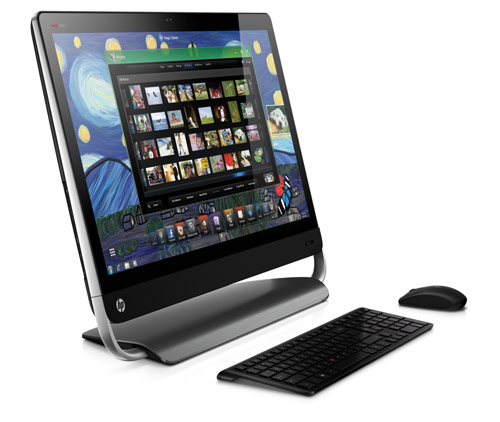



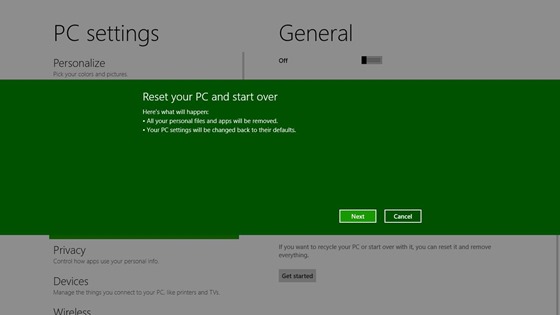
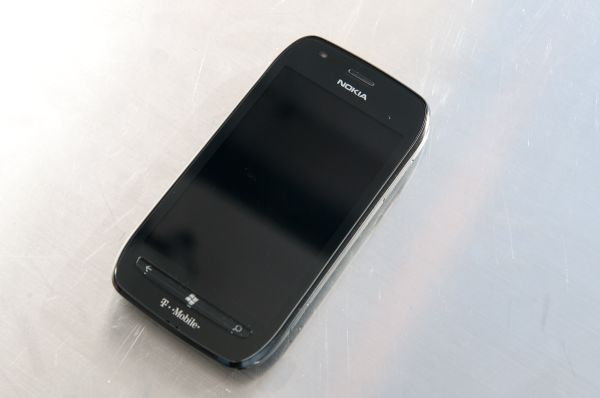
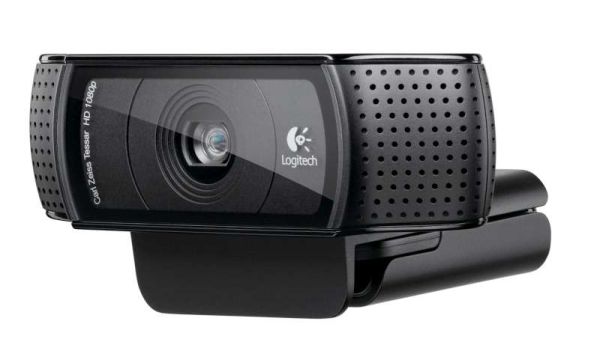

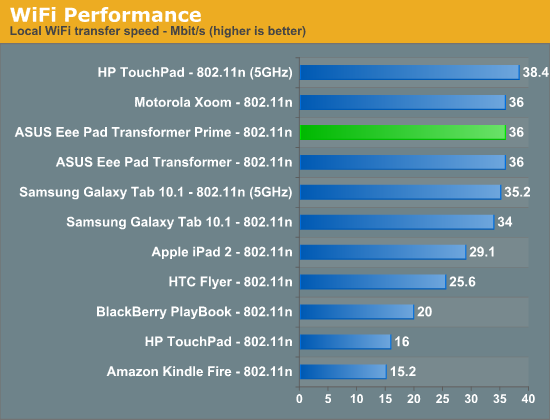
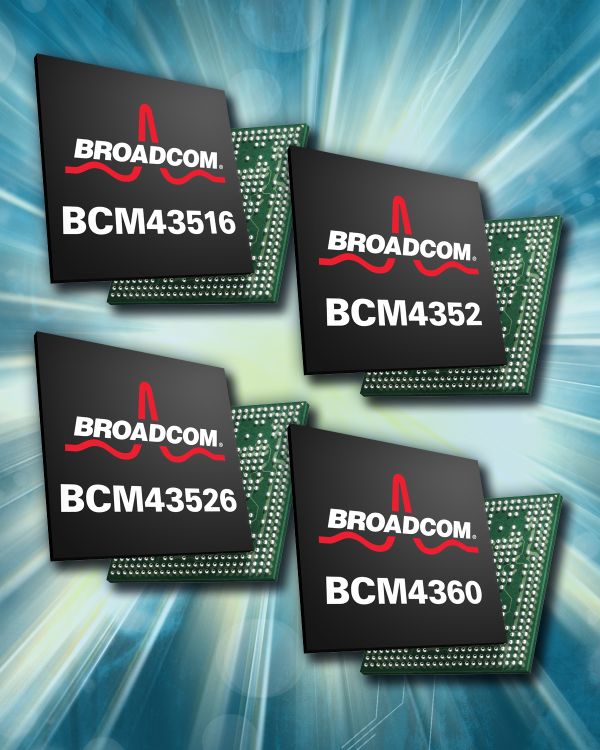
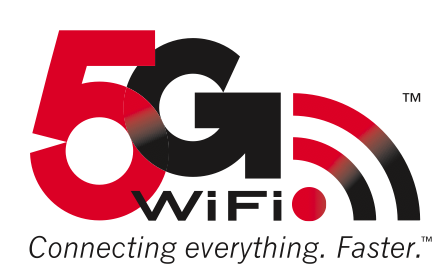
















Bookmarks